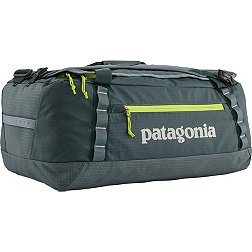Fit is one of the most important features of a hiking backpack. If your hiking backpack is too long, it may sag. If it is too short, it may not support your back. Use this guide to help find a comfortable fit.
Hiking Backpack Hip Belt Size
The hip belt of your hiking backpack should cup your hips when cinched. Some people with straight or narrow hips may prefer a standard hip belt, while hikers with more curve to their hips may prefer a women's-specific model.
Hiking Backpack Shoulder Strap Size
The shoulder straps of your hiking backpack should anchor to the backpack just below the bone at the base of your neck and the crest of your shoulders. The straps should wrap securely around your shoulders and be at least 5 inches below your armpit.
Hiking Backpack Sternum Straps
Sternum straps are meant to keep your shoulder straps from sliding off your shoulders. These straps are not meant to support weight and should not be pulled so tightly that they restrict breathing.
Hiking Backpack Fabrics
Some hiking backpacks are made of nylon because it is durable, abrasion-resistant and sturdy, while some ultra-lightweight models use a Denier rip-stop material to save weight. The bottom of your backpack may be made of a more structured material, like Hypalon or heavy-weight Cordura.
Pro Tip: Looking for water protection and extra durability? Many nylon backpacks are coated with a water-resistant sealant.
Hiking Backpack Capacity
Capacity can be measured by volume in cubic inches or liters. Consider how much space you'll need to comfortably pack all of your hiking gear when picking out the right hiking backpack.
Tips for Packing Your Hiking Backpack
- Many hiking backpacks have easily-accessible zipper compartments to store frequently used gear
- If your hiking backpack doesn't have a separate bottom compartment, the bottom of your pack is a great place to store your sleeping bag since you won't need it until you set up camp
- Make sure to prioritize items and store frequently used gear at the top of your pack
- For Internal Frame Packs: Your heaviest gear should go at the center of your pack to optimize stability and balance
- For External Frame Packs: Store your heaviest items at the top of your pack
- Make sure to tighten all of the straps to eliminate empty space and avoid your gear shifting
- Consider using trekking poles to distribute weight if your hiking backpack is extra heavy
- Avoid too much weight on the external portion of your backpack to prevent anything from becoming entangled in brush or lost
























































